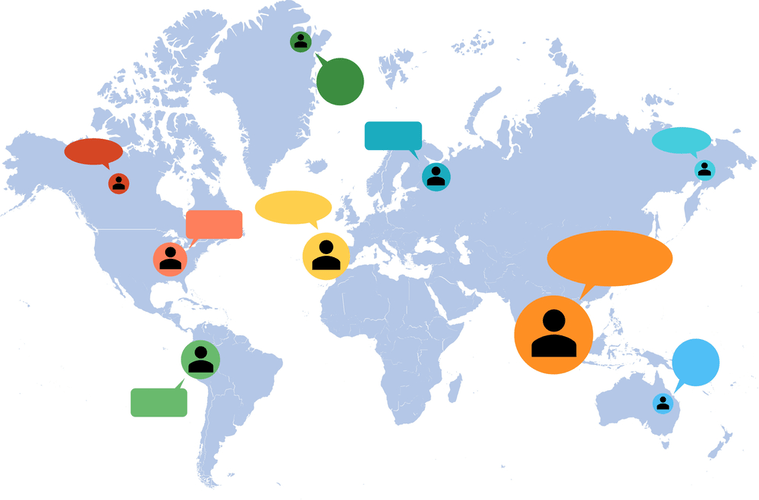User stories are documented descriptions of software features from the end-user perspective. The document describes scenarios of how the user engages with the solution. Business requirements include high-level statements of goals, objectives, and needs of your project. When writing your documentation, be consistent with what is functional requirement the language and make sure that your requirements are accurate. They should cover every scenario, but never contradict each other. Avoid vagueness and weak phrases such as “system has to be fast” or “when something happens.” Be specific and quantify the terms so that all the readers can understand them in the same way.
These may include government legislature, standards pertaining to the solutions, or strategic decisions. With well-documented and detailed functional requirements teams can more accurately estimate the time needed for the development and potential budget. When a client contacts us at Elogic for ecommerce development services, we like to issue a brief. It helps our clients make up their minds about their ecommerce requirements list and draw us a clear picture of what they’d like to see. Similar to RFP, a brief is organized in a spreadsheet with category-specific questions in tabs. Your functional requirements for an online shopping system should specify how the orders are processed in your store and whether this functionality should be optimized.
Why Outsourcing Software Testing Is Among the Best Things For Your Business?
Okay, now that we figured out what information the functional requirements should include, let’s look at their types. As a customer interested in software development, you can protect yourself from these kinds of issues. Make a detailed plan, take the time and requirements, and discuss them with your service provider. We recommend holding at least a couple of online meetings, as well as not giving up the discovery phase, which allows you to interview the Product Owner and other interested parties.
Unwanted behavior functional requirements cover all undesirable situations. Good systems engineering practice anticipates undesirable situations and imposes requirements to mitigate them. In order, to identify them, you need to analyze the product's performance and make it convenient and useful. Such requirements may appear when the product is being used on a regular basis.
5.5.1 Design and technical requirements deployment
Problems discovered during the phase of gathering the functional requirements are the easiest and cheapest to correct. In addition, documenting functional requirements and analysing them is helpful for identifying the missing requirements. Furthermore, the functional requirements documentation is useful as a reference for checking whether the product provides all the functionalities required by the client.

Another reason to analyze and re-write long requirements, even those with a single shall, is that long requirements are more likely to be misinterpreted than short, concise requirements. Often, a specific set of one or more preconditions must be present before the occurrence a specific event for that event to trigger a required system response. In such cases, the EARS templates may be combined, using a combination of the keywords.
functional requirements
When the client sets about a project, he has specific needs and wants. Both needs and wants should be converted into the work scope, and here is where the difference comes in handy. Unlike functional requirements, non-functional requirements do not form the backbone of the system. That means the system will still work if the non-functional requirements are not met. Closely related to a requirements specification document is awork breakdown structureor WBS.
- Typically, a functional requirement is a basic functionality or desired behavior documented clearly and quantitatively.
- Sometimes this means you aim for “just as good” as the competition, and sometimes it gives you a point from which to be better.
- These may include white paper analysis, meeting summaries, and any other document contribution to the functional requirements document.
- The goals of one non-functional requirement may conflict with another since they typically have a broad effect on systems.
- Stakeholders may instead rely more on asynchronous communication to stay aligned.
- It’s a best practice to put contextual implementation in a separate paragraph that does not contain a unique identifier.
These are applicable for both display of process parameters and control of the process. When the ACMS is used on the ground, it transmits collected data to ground equipment through the ground maintenance interface. The operators can observe the status of each airborne subsystem in real time through the ground equipment. The ACMS monitors the data of avionics, electromechanical, flight control, power, measurement, and control subsystems of the UAV. For a subsystem with computers, the ACMS completes real-time monitoring through the digital interface. For a subsystem without a computer, the ACMS completes real-time monitoring by directly collecting discrete or analog data.
Functional Requirements
It doesn’t matter how your functional and non-functional requirements are framed, they must be understandable and as simple as possible for all project participants. It is generally accepted that use cases, specified in narrative form , depict https://www.globalcloudteam.com/s. This is because a use case, via the main and alternate flows, shows how a user interacts with a system in order to achieve a desired result. This article is the next stage of the journey in our study, which is the Discovery Workshop.

Sometimes it features data flow diagrams detailing the conceptual flow of data. The requirements in this section do not describe the physical database. If you’re looking into a future-proof solution, scalability should be your take. This requirement defines how the website can grow and expand its functionality without affecting its performance. You should be able to add more memory, servers, or disc space to complete more transactions on your website.
4.2 Establishment of system functional processing requirement organization
The impact of the non-functional requirements is not on the functionality of the system, but they impact how it will perform. For a well-performing product, atleast some of the non-functional requirements should be met. Functional requirements examples describe the behavior of the software in terms of the inputs it receives and the outputs it produces.

It also details the intended purpose of the project by describing the business objectives. Commonly, this section also lists the assumptions and constraints of the project. Assumptions are future situations that may occur and are outside of the control of the project but still may influence the outcome. Constraints are all conditions beyond the control of the project that may in any way limit the development options.
Business Requirement Document Example – Why Chrysler PT Cruiser was Tagged ‘Hero to Zero’
Execution qualities like security and usability, which are observable at run time. Demand generation is the process of creating and cultivating interest in a product or service with the goal of generating ... Some professionals start to defend the requirements they have documented when the requirement is modified, instead of finding the correct truth. You add rules or examples, scoping statements or objectives anything except the requirement itself. 3) A Verification email is sent to user whenever he/she registers for the first time on some software system.
Published by: yson001@gold.ac.uk in Uncategorized